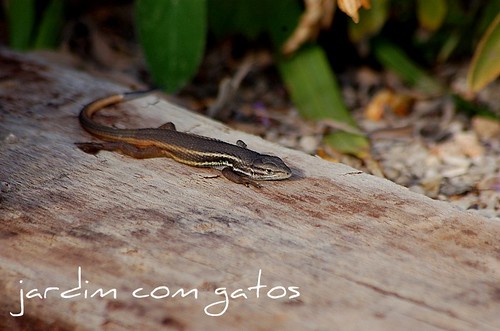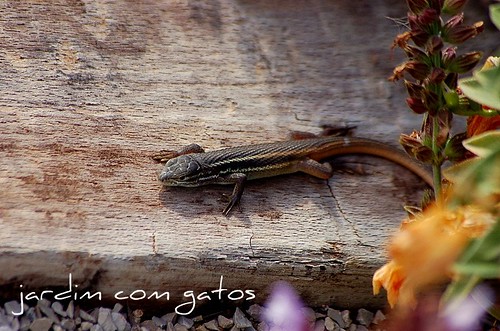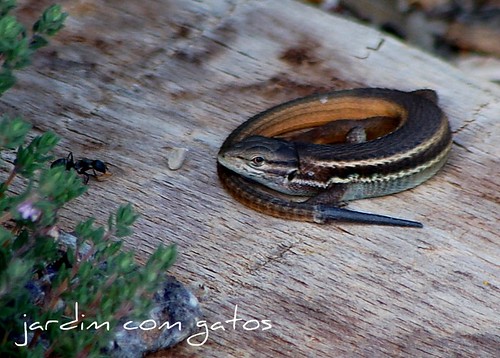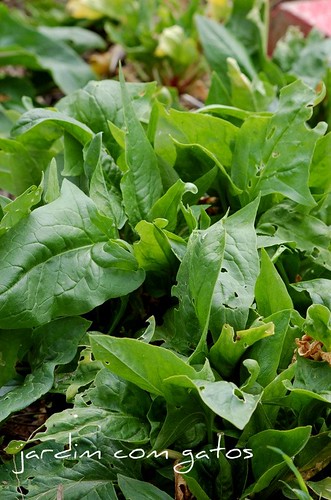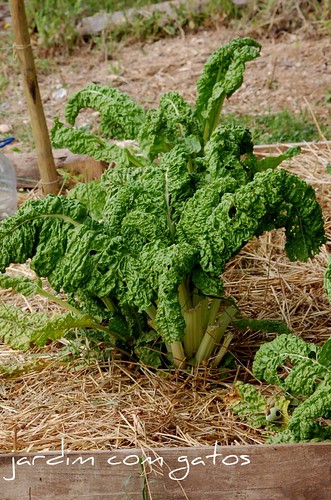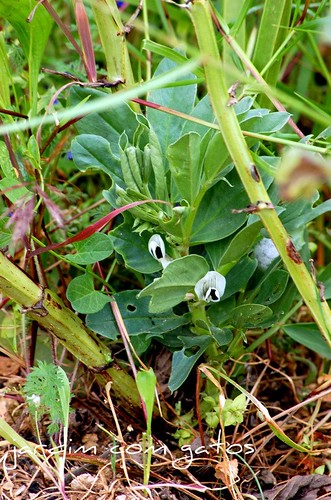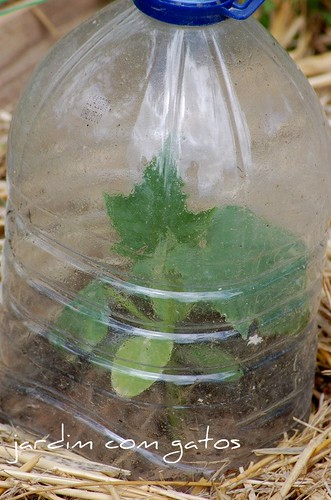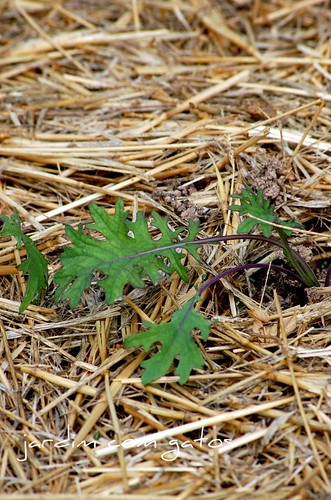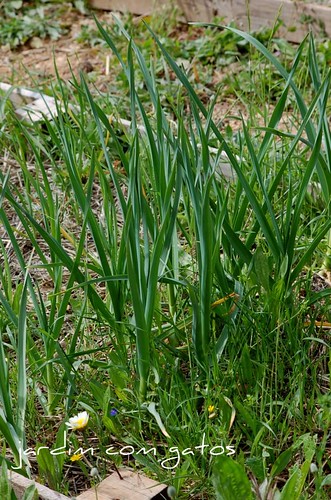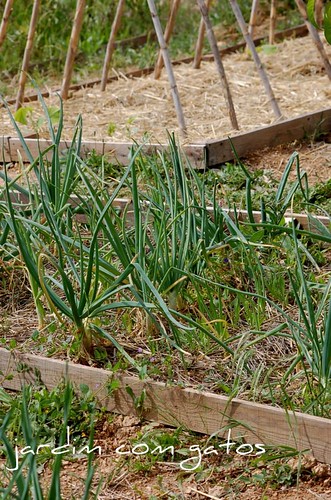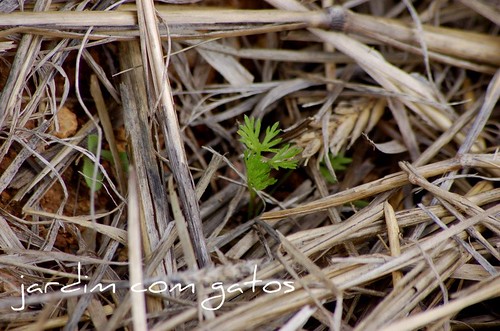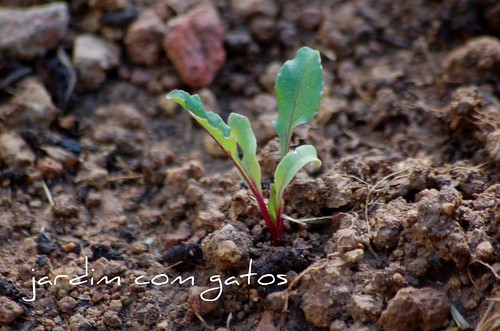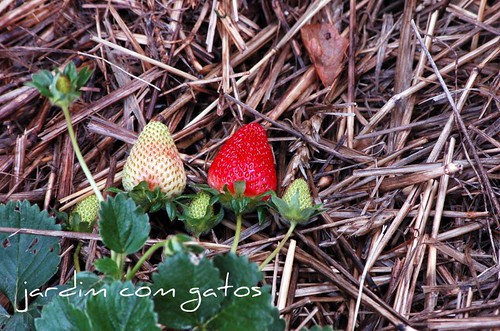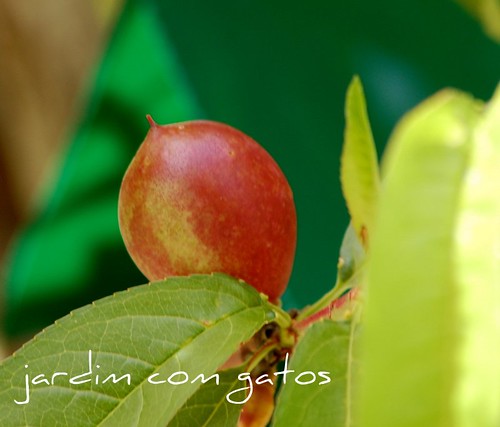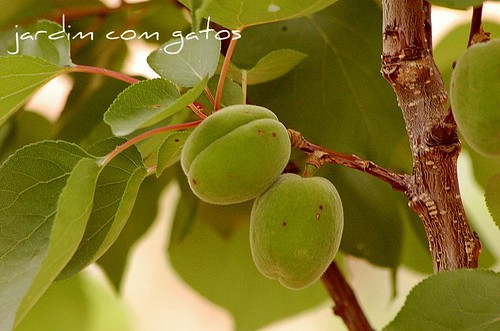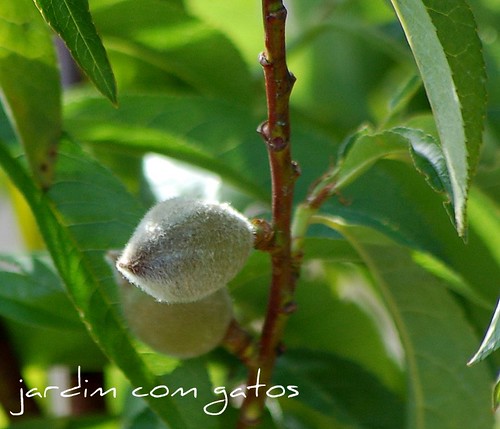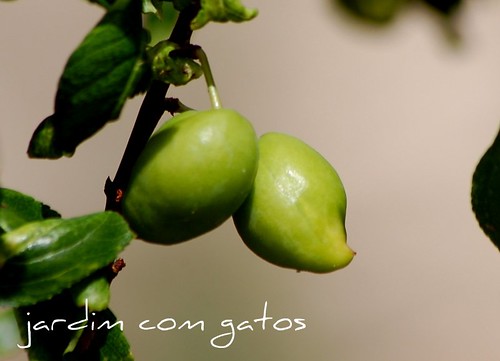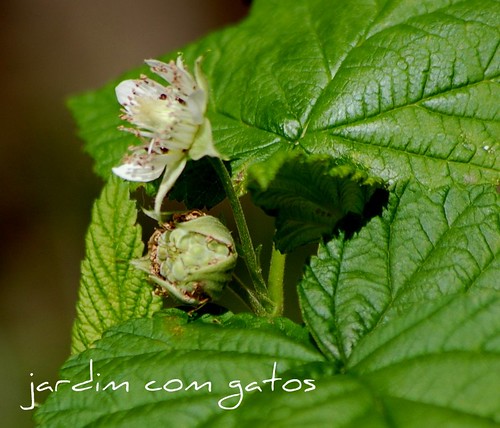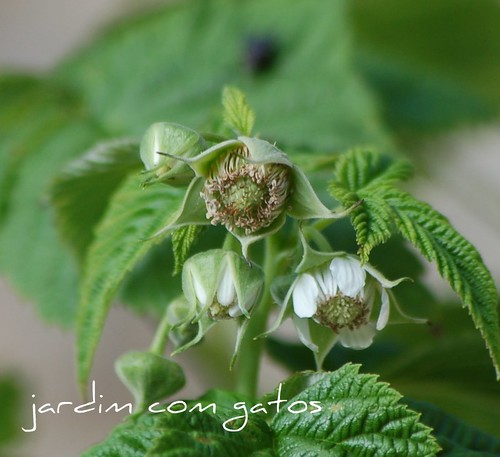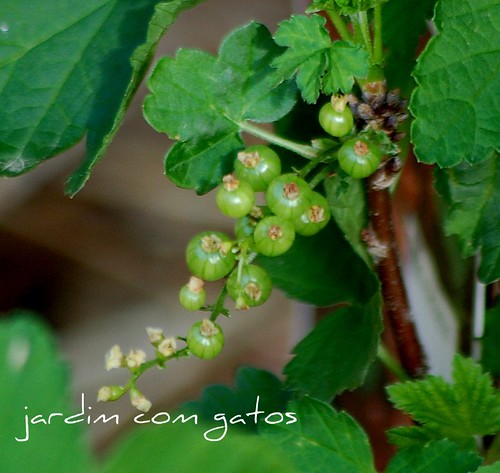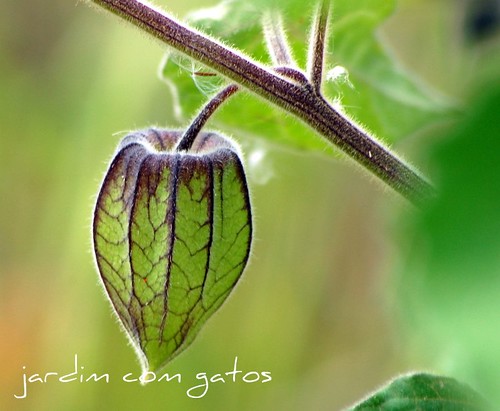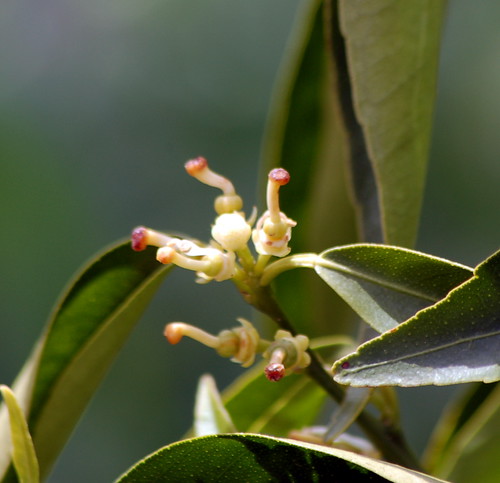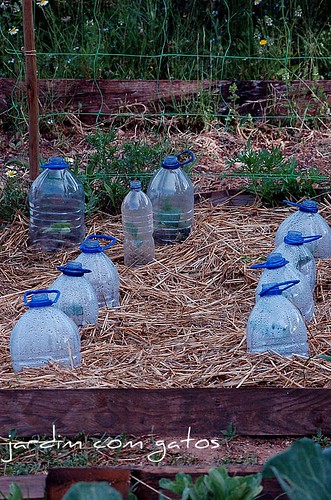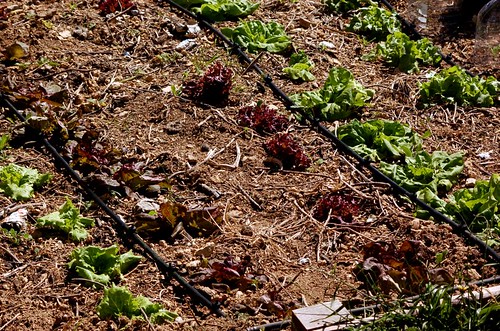
Com a vaga de calor que chegou depois das chuvas a horta começa a precisar de ser regada com maior frequência, o que envolve um enorme dispêndio de tempo e de água.Já há algum tempo que andava a pensar nisso e agora decidi-me. Comecei hoje a construir um sistema de rega. Nada de muito complicado, até porque nem sei muito bem o que ando a fazer, mas funciona. As alfaces, coitadas, que já começavam a murchar debaixo do sol abrasador foram as primeiras a experimentar a inovação.
We are under a heatwave at the moment. Only last week it was raining and now the plants are already wilting under the mid day sun. This means that I need to start watering the vegetable garden. Because I don't have that much free time and I want to save water I decided to built a drip irrigation system (I've been thinking about it for quite some time now). I started it today. Its nothing fancy (its the first time ever I'm doing such a thing) but I think it will do the trick. The first bed to receive it was the lettuce bed, the pure things looked terrible under the mid day sun .
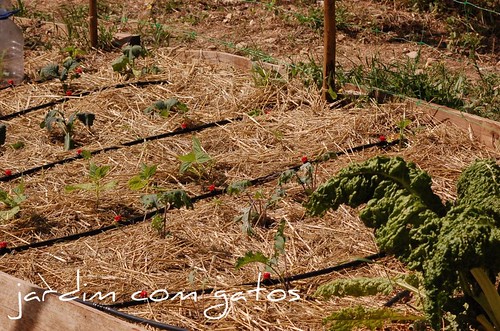
Com este sistema de rega vou poder regar à noite o que só me traz vantagens. Primeiro não tenho de estar a perder esse tempo com uma mangueira na mão, segundo o facto de regar à noite permite que a água seja melhor absorvida pela terra, sem perdas por evaporação. Por último como tenho tarifa bi-horária o custo da electricidade necessária para a bomba funcionar é bastante menor.
I think that this drip irrigation system will save me time, water and money. For starters I will be able to water during the night, I won't need to be there wasting my time, the watering will be more efficient since it will be absorbed and not evaporate and because my electricity is cheaper at night I will cost me less for the water pump to work for 1-2 hours.
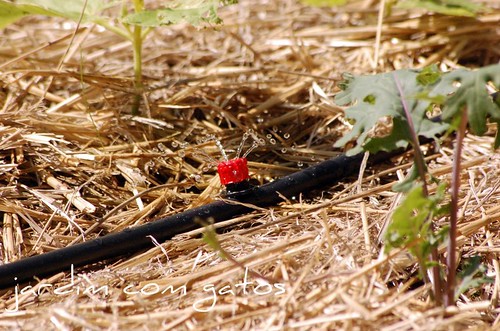
Como não sabia bem o que escolher acabei por trazer dois tipos de gotejadores para ver o que funcionava melhor. Usei estes, que funcionam como um mini aspersor, nos morangueiros e nas couves.
I decided to use 2 different types of emitters since I didn't know which were the best. This one that works as a mini sprinkler was used for the strawberries and the kale beds.
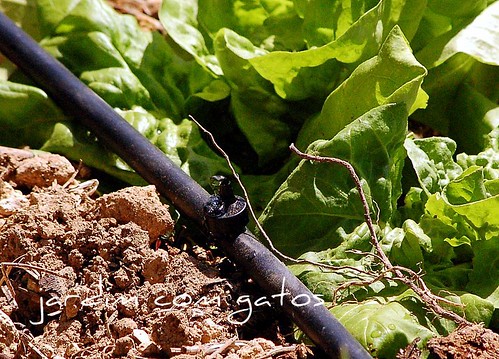
Estes, gotejadores, com um débito muito menor usei-os nas alfaces. Depois de os ver a funcionar acho que vou optar por estes últimos. São mais baratos que os anteriores e servem perfeitamente para o que se pretende.
Then I used these, with a much lower water flow, in the lettuce bed. After seeing how they both work I decided I will use these for the rest of the garden. They cost less and do a perfect job.
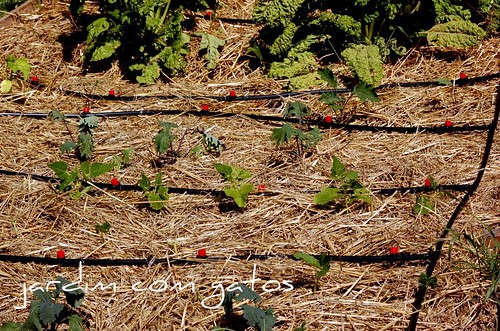
O trabalho ainda está para durar. Hoje consegui instalar a rega em 4 canteiros (de um total de 22). Acho que tenho trabalho para o fim de semana...
I only managed to install the irrigation system in 4 of the 22 beds. I guess it will take me quite some time until its all done. I'll be busy for the weekend....
